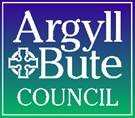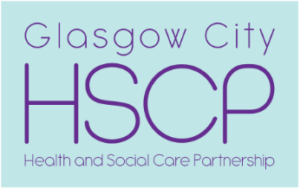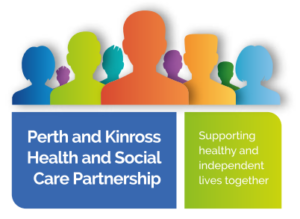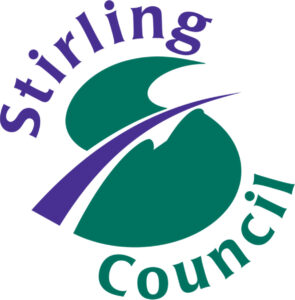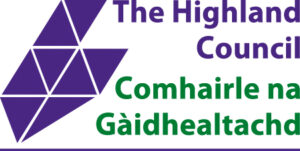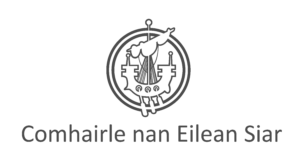NATIONAL STRATEGY FOR COMMUNITY JUSTICE: CONSULTATION
Social Work Scotland is the professional body for social work leaders, working closely with our partners to shape policy and practice, and improve the quality and experience of social services. We welcome this opportunity to comment on the National Strategy for Community Justice.
National Strategy for Community Justice – Aims
The draft national aims for the revised National Strategy for Community Justice are:
Aim 1: Optimise the use of diversion and intervention at the earliest opportunity
Aim 2: Ensure that robust and consistent community interventions and public protection arrangements are in place across Scotland
Aim 3: Ensure that services are available to address the needs of individuals accused or convicted of an offence
Aim 4: Strengthen leadership, engagement, and partnership working
Is the wording of the four national aims understandable?
- No x
If you answered no, please provide further explanation:
Social Work Scotland (SWS) consider that the aims are broadly understandable. The one caveat is the use of the term ‘diversion’. Whilst we interpret this in the widest sense of the term, it could be misunderstood as more narrowly referring to Diversion from Prosecution.
However, whilst these Aims are worthwhile, and we understand the intention to avoid overly complex statements, they are to a large extent framed passively and lack ambition. For example, simply optimising the use of Diversion from Prosecution and ensuring services are available to address needs will not necessarily improve the outcomes we seek for people that have offended. Our ambition must be to improve outcomes and the quality of services and the Aims should reflect this. As an example, Aim 3 could be re-written as:
Ensure that services are available to address the needs of individuals accused or convicted of an offence and deliver successful outcomes.
In respect of Aim 3, we note that ‘addressing needs’ applies equally in both a custodial and community setting. However, 3 of the 4 associated priority actions are in a prison context. The aim could be clearer i.e. is it only intended to reflect a prison context or also the community?
Do you think the four national aims capture the most important aspects of community justice?
- No x
If you answered no, please provide further explanation:
In respect of Aim 2 it does not go far enough. We agree that consistency in providing evidence-based interventions is crucial and it is acknowledged that this is not always the case. Equally, public protection is a key component of a community intervention; indeed, “Community safety and public protection” is one of the three key outcomes set out in the National Outcomes and Standards for Social Work Services in the Criminal Justice System (Scottish Government, 2010) for criminal justice social work.
However, it is important to reference desistance from offending (or alternatively rehabilitation; in essence, clarity and emphasis on preventing and reducing reoffending) in this aim. As it is argued in the Vision for Justice, whilst there will always be a place for prison and public protection “people going through the criminal justice system (must) have access to the support and rehabilitation they need” (page 7).
The reference to public protection in Aim 2 implies that the needs of victims are being taken account. But there is only one reference to victims (Priority action 13) in the Aims and priority actions. In the context of the Vision for Justice, which states “We must hear the voices of victims” (page 7), this aim could be strengthened.
We suggest:
Robust and consistent community interventions and public protection arrangements are in place across Scotland to ensure desistance from offending and protect victims.
In respect of Aim 4, we think this could be strengthened by explicitly including ‘community justice’ and acknowledging this requires national and local synergy.
Strengthen community justice leadership, engagement, and partnership working nationally and locally.
To what extent do you agree/disagree with the national aims for the revised National Strategy for Community Justice?
| National Aims | Strongly disagree | Disagree | Neutral | Agree | Strongly agree |
| Aim 1: Optimise the use of diversion and intervention at the earliest opportunity | x | ||||
| Aim 2: Ensure that robust and consistent community interventions and public protection arrangements are in place across Scotland |
x | ||||
| Aim 3: Ensure that services are available to address the needs of individuals accused or convicted of an offence | x | ||||
| Aim 4: Strengthen leadership, engagement, and partnership working | x |
Do you have any further comments on the National Aims?
Please refer to our comments in Questions 2.
It would be hard to disagree with the National Aims.
Finding the balance between the aspirations for a shorter, more concise and accessible strategy with a small number of Aims and a much more detailed one is difficult. The risk is that the focus can fall on what isn’t included as much as what is thus undermining the intentions and inviting accusations of tokenism e.g. there is only one reference to victims (Priority action 13).
Understandably, there has been much debate about the absence of prevention in the strategy i.e. before a person enters the justice system in the first place. This is not included in the definition of community justice in the Community Justice (Scotland) Act 2016 (https://www.legislation.gov.uk/asp/2016/10/section/1/enacted). Therefore, we understand why it has not been included. Nevertheless, we would welcome a national debate on whether it should be included in the Act. There is also merit in considering the development of a national prevention strategy because preventing people from offending in the first place should be our primary goal.
At the time of writing, the future scope of the National Care Service in respect of justice social work (JSW) remains unclear. Whether JSW is included or not, we know there will be fundamental change. Whatever form this takes, JSW will continue to play a leading role in delivering community justice. In respect of Aim 4, therefore, strengthening the leadership and influence of JSW will be crucial in achieving many of the Aims and Priority actions in this strategy. Social work will continue to offer a unique perspective to ensure that a Human Rights enabling and strengths-based approach remains central to the delivery of services.
To achieve the Aims set out within the draft strategy will, by necessity, require adequate resourcing of the infrastructure and workforce to deliver on them. Financial modelling must be undertaken to understand the justice social work workforce requirement to realise the Aims. We note Scottish Government’s intention to now proceed imminently with a community interventions costs project to consider, in collaboration with key partner organisations, whether and how a more accurate assessment can be made of the costs associated with community interventions across Scotland. This project is still being defined but must proceed at pace. We cannot stress how important this work is. The unit cost for delivering JSW interventions are calculated by dividing total recorded expenditure across the 8 now disbanded Community Justice Authorities by the volume of disposals. This is, at best, a crude and reductive method that fails to take into account the complexity and demands now placed on JSW.
National Strategy for Community Justice – Priority Actions
In February 2022, the Scottish Government published consultation feedback on the review of the current National Strategy for Community Justice. Informed by the responses to this review and other evidence and engagement, priority actions have been developed under each of the national aims. The priority actions should support the national aims.
To what extent do you agree/disagree that these community justice priority actions will contribute to the achievement of national Aim 1 (Optimise the use of diversion and intervention at the earliest opportunity)?
| Priority actions for Aim 1 | Strongly disagree | Disagree | Neutral | Agree | Strongly agree |
| 1. Enhance early intervention by ensuring greater consistency, confidence in and awareness of services which support the use of direct measures and diversion from prosecution | x | ||||
| 2. Improve support for vulnerable individuals by ensuring the provision of consistent, equitable and accessible immediate support in a crisis and screening within Police Custody Centres | x | ||||
| 3. Improve support following arrest by ensuring substance use and mental health services are available and appropriate referrals take place at the earliest opportunity | x |
Do you have any further comments or suggested changes on how these priority actions will contribute to achieving Aim 1 (Optimise the use of diversion and intervention at the earliest opportunity)?
In respect of Priority action 1, the actions of greater consistency, confidence in and awareness of Diversion from Prosecution will not in and of themselves lead to better outcomes. This reflects our comments in Question 2. It is suggested that amending the action would strengthen it.
Enhance early intervention by ensuring greater consistency, confidence in and awareness of services which support the use of direct measures and diversion from prosecution leads to better outcomes for individuals.
There is a need for clarity about the term consistency which is used on several occasions in the strategy. We suggest it should be defined as provision of services and outcomes e.g. Diversion (or bail supervision or structured deferred sentences) must be available across Scotland but delivery might be different depending on local needs. What is important is measuring performance to demonstrate outcomes and effectiveness.
In respect of Priority action 2, we question what is meant by ‘vulnerable individuals’. Arguably, all people within Police Custody Centres (PCC) are vulnerable and in accordance with a person-centred and trauma-informed approach improved support should apply to all those in PCCs. This would be in line with the Scottish Government’s Vision for Justice which rightly emphasises embedding trauma-informed practices across the justice system and “People will be treated with empathy and kindness and provided with the support they need to thrive” (page 6). We suggest ‘vulnerable’ could be replaced with ‘all’.
Moreover, there is a related question as to how screening is achieved and what we mean by this. For example, approximately 40% of individuals in a custodial setting are likely to have a learning disability/communication support needs (Understanding the social care support needs of Scotland’s prison population, Alma Economics, Scottish Government 2021). This is likely to be similar in PCCs and more widely across the justice system, including community sentences. There is currently no common screening tool for universal use within the criminal justice system, which would also provide data that could be systematically collected and aggregated to provide a more accurate assessment of the prevalence of neurodivergence to inform needs analysis and service planning at all levels of the criminal justice system.
We would also highlight the particular needs of young people under the age of 25. This has been well articulated, not least in recent Scottish Sentencing Council (SSC) sentencing young people guidelines (January 2022) and the associated literature review underpinning this (The development of cognitive and emotional maturity in adolescents and its relevance in judicial contexts, O’Rourke et al, submitted to the SSC January 2020).
Social Work Scotland strongly supports the availability of support to people following arrest. This is when people are often at their most vulnerable but also open to receiving help. In terms of Priority action 3, however, we think this should not be restricted to substance misuse and mental health, important those these are. It should encompass support broadly, to include, for example, homelessness and poverty. This support must be accessible. Referring back to our comments relating to people with a learning disability/communication support needs above, it would be crucial that this is available in a way that can be understood by all those requiring support.
To what extent do you agree/disagree that these community justice priority actions will contribute to the achievement of national Aim 2 (Ensure that robust and consistent community interventions and public protection arrangements are in place across Scotland)?
| Priority actions for Aim 2 | Strongly disagree | Disagree | Neutral | Agree | Strongly agree |
| 4. Support the use of credible and robust alternatives to remand by ensuring high quality services are consistently available and delivered effectively | x | ||||
| 5. Strengthen supported management in the community by increasing and widening the use of electronic monitoring and technologies | x | ||||
| 6. Ensure that those given community sentences are managed appropriately and safely by delivering high quality, consistently available, trauma-informed services and programmes that support public protection | x | ||||
| 7. Ensure restorative justice is available across Scotland to all those who wish to access it by ensuring consistent provision and effective promotion of available services | x |
Do you have any further comments or suggested changes on how these priority actions will contribute to achieving Aim 2 (Ensure that robust and consistent community interventions and public protection arrangements are in place across Scotland)?
For Priority action 6, a crucial component is missing. We agree that public protection is a key outcome that we are seeking to achieve as part of a community sentence as stated above (Question 2), but this will only be achieved by delivering interventions that are rooted in rights-based, desistance models of theory. Therefore, we strongly suggest this action is amended:
Ensure that those given community sentences are managed appropriately and safely by delivering high quality, consistently available, trauma-informed services and programmes that support desistance from offending and public protection.
As it states in the Vision for Justice “…public protection remains a priority and that people going through the criminal justice system have access to the support and rehabilitation they need” (page 7).
A related point is the reference in this action to programmes as opposed to interventions. The former is a set of related measures or activities with a particular long-term aim that better reflects the evidence-based approach SWS supports, versus interventions which are simply actions and processes. Arguably, the latter is more all-encompassing term, however. Aim 2 refers to community “interventions”. Either way, the language in the strategy should be consistent.
We agree that interventions/programmes need to be delivered consistently in terms of both availability and standard. To achieve this will require consideration of the challenges faced by remote rural and island authorities (e.g. in respect of group work), researching and implementing a greater range of programmes that are assessed as effective, for example for general offending and specific groups of disadvantaged people (e.g. people with learning disability/communication support needs; for example, as provided by Her Majesty’s Prison & Probation Service) and sustainable funding e.g. by adopting multi-year funding settlements rather than the current single year budgets. There is a role for the commissioning and procurement of services to ensure they are well informed of the specific needs of this population to ensure the right services are procured.
For Priority action 7, this is entirely focussed on the offender. It requires to reflect a clear victim focus and it is suggested adding ‘that are victim-led’ at the end of the statement. Again, this would better articulate the Vision for Justice which states “We must hear the voices of victims (and) we must offer approaches to justice which place victims at the heart” (page 7).
Ensure restorative justice is available across Scotland to all those who wish to access it by ensuring consistent provision and effective promotion of available services that are victim-led.
To what extent do you agree/disagree that these community justice priority actions will contribute to the achievement of national Aim 3 (Ensure that services are available to address the needs of individuals accused or convicted of an offence)?
| Priority actions for Aim 3 | Strongly disagree | Disagree | Neutral | Agree | Strongly agree |
| 8. Enhance individuals’ access to health and social care and continuity of care following release from prison by improving the sharing of information between relevant partners | x | ||||
| 9. Ensure that the housing needs of individuals in prison are addressed consistently and at an early stage by fully implementing and embedding the SHORE standards across all local authority areas | x | ||||
| 10. Enhance individual’s readiness for employment by ensuring increased access to employability support through effective education, learning, training, careers services and relevant benefit services | x | ||||
| 11. Enhance community integration and support by increasing and promoting greater consistency in the use of voluntary throughcare and third sector services | x |
Do you have any further comments or suggested changes on how these priority actions will contribute to achieving Aim 3 (Ensure that services are available to address the needs of individuals accused or convicted of an offence)?
We agree that ‘access’ to health and social care and continuity of care is important and the role of information sharing in achieving this (Priority action 8). But related to this is engagement. In other words, how do we seek to successfully engage people with community-based services as they are released from prison?
This relates to why we have chosen a neutral response to Priority action 11. Simply enhancing community integration by increasing the numbers of those using voluntary throughcare services is a limited action and presupposes that what is currently available works. The stubbornly high prison numbers tell us that it doesn’t. Would it not be more ambitious to frame this action differently?
Enhance community integration and support by developing and implementing a strategic approach to community integration planning pathways based on evidence-based practice.
Whilst we support the recently announced review of the voluntary throughcare services which Scottish Government funds and a wider examination of prisoner throughcare services across the Scottish justice sector, the scope of this is limited. For example, it doesn’t include the voluntary throughcare services delivered by justice social work. We also note Holyrood’s Criminal Justice Committee report, Judged on progress: The need for urgent delivery on Scottish justice sector reforms (January 2022) called for the re-introduction of Scottish Prison Service’s Throughcare Support Officer service within 6 – 12 months.
There is an opportunity to strategically review the whole provision of throughcare and associated pathways for the short-term prison population rather than simply focussing on a narrow action of increasing numbers. A vision of good support for people post-sentence is rooted in a comprehensive Community Integration Plan, developed during a person’s prison sentence with their input and involvement. This should form the bedrock upon which successful reintegration is built and then delivered. There must be clear lines of ownership and accountability in the prison and community. One person is accountable for the plan in prison and one person in the community working together collaboratively and coordinating activity with one bespoke plan that is person-centred and trauma-informed.
To what extent do you agree/disagree that these community justice priority actions will contribute to the achievement of national Aim 4 (Strengthen leadership, engagement, and partnership working)?
| Priority actions for Aim 4 | Strongly disagree | Disagree | Neutral | Agree | Strongly agree |
| 12. Deliver improved community justice outcomes by ensuring that effective leadership arrangements are in place and working well, collaborating with partners and planning strategically | x | ||||
| 13. Enhance partnership planning and implementation by ensuring the voices of victims, survivors, those with lived experience and their families are effectively incorporated | x | ||||
| 14. Support integration and reduce stigma by ensuring the local community and workforce have an improved understanding of and confidence in community justice | x |
Do you have any further comments or suggested changes on how these priority actions will contribute to achieving Aim 4 (Strengthen leadership, engagement, and partnership working)?
Further to the point we made in answer to Question 2, in respect of Priority action 12 we think this this would be strengthened by making it clear that this applies to both national and local leadership arrangements. Both need to work in synergy if we are to improve the delivery of outcomes and it applies across both the statutory and Third sector. Commissioning and procurement will be part of the discussions to ensure the right services are identified and that these adopt trauma-informed approaches.
We know that community justice is not being delivered as well as it could or should be. The Audit Scotland report, Community justice – Sustainable alternatives to custody (July 2021) states: “A new national body, Community Justice Scotland, and 30 Community Justice Partnerships were established in 2017. It is not clear whether roles and accountability arrangements are well understood and working effectively” (page 3). Arguably, this National Strategy does not do enough to set out how partners will be held accountable for the outcomes that they are expected to deliver. Therefore, we suggest alternate wording:
“Community justice partners will be held accountable for delivering improved outcomes by ensuring that effective leadership arrangements are in place and working well nationally and locally, collaborating with partners and planning strategically.”
This equally applies across all 3 Priority actions.
We have given examples in other answers about including reference to outcomes, too.
Rightly, Scottish Government has emphasised a trauma-informed approached in the Vision for Justice. We think Priority action 14 could be strengthened by adding this.
Support integration and reduce stigma by ensuring the local community and workforce are trauma-informed and have an improved understanding of and confidence in community justice.
Do you have any other comments on the National Strategy for Community Justice: Revision Consultation document that were not captured in the national aims and priority actions questions?
We question how transformative or ambitious aspects of this strategy are. Aim 2, for example, has 4 Priority actions – alternatives to remand (4), electronic monitoring (5), trauma-informed (6) and restorative justice (7) – all of which are initiatives at various stages of development and progress and as such it is hard not to ‘strongly agree’. But they are not new and to some extent this strategy, therefore, is simply capturing existing work rather than focussing on setting out to articulate what a truly transformed community justice system might look like and what we might aspire to. We refer to work undertaken by the Criminal Justice Board’s RRT community justice sub-group in 2021 which set out a range of thinking in this regard.
A question arises as to how strategic this strategy is. We think this is a legitimate criticism. At times its focus is more on what is going to be done than the why and how the strategy will lead to change and improved outcomes for people. Setting out this context as an introduction to the strategy would help and, crucially, how the strategy aligns to other strategies and policies that are relevant to community justice in order to ensure coherency and a joined-up approach – community justice is not delivered in isolation. There must be clear links to related Scottish Government policy areas e.g. health and tackling poverty and inequality – we know the majority of crime is rooted in areas of multiple deprivation, where there are high-levels of unemployment (hence our support for Priority action 10) and people live in poor socio-economic circumstances and who are now affected by rampant inflation and spiralling energy costs. There is a moral imperative and obligation to address this fundamental inequality if we aspire to a fair, equal and just society underpinned by human rights in our country.
We question to what extent the wider public will find the National Strategy meaningful as a reasonable degree of knowledge is required to engage with many aspects of it e.g. reference to SHORE, Police Custody Centres and voluntary Throughcare. This reflects our comments in Question 3 regarding the balance between too much and tool little detail. We think this is about right but suggest a glossary of terms would be beneficial.
We have referred to funding and resources in our responses. Whilst more is not always the key to delivering better outcomes, achieving the Strategy will require new money and investment if we are, for example, to deliver a greater range of effective and more consistently available programmes and interventions (not necessarily accredited to the same standard as the Caledonian System or Moving Forward: 2 Change but nevertheless assessed as the best available), fully implementing and embedding the SHORE standards across all local authority areas, fulfilling the commitment to the roll-out of Restorative Justice, achieving better voluntary Throughcare services, and meeting the needs of individuals, be they in respect of accommodation, welfare rights, employability, alcohol and drug services or mental health. This must support delivery in all types of areas, remote, rural, and island communities in particular.
Linked to this is the substantial investment in the social work workforce to ensure social workers and paraprofessionals have the manageable caseloads required to underpin the high-quality, person-centred and trauma-informed services we aspire to.
Social Work Scotland are supportive of the new forms of use for electronic monitoring introduced on 17 May (and future uses e.g. GPS tracking), expanding the use of Diversion from Prosecution and restorative justice set out in the strategy. However, we also caution against seeing these as silver bullets. The key is high-quality assessment to inform suitability – this is what required if we are to achieve truly person-centred services; and a crucial aspect of this is ensuring the needs of young people are taken into account so they have access to the right support.
The Scottish Government has acknowledged that the consultation period for the National Strategy has been curtailed. It is crucial, therefore, that sufficient time is devoted to developing the associated SMART delivery plans to deliver this strategy across the four Aims and we urge Scottish Government and Community Justice Scotland to ensure meaningful and accessible engagement is factored into planning. This should involve people with lived experience across the spectrum of those in the justice system.



